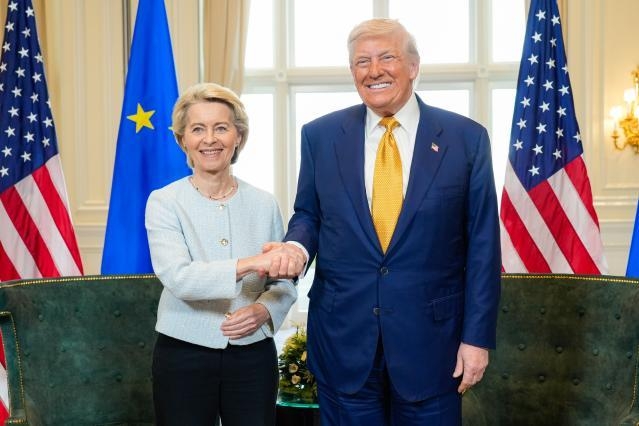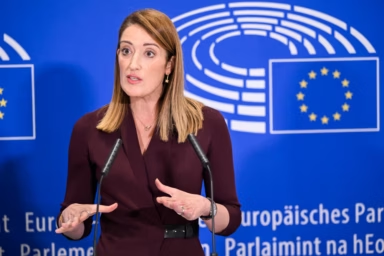Brussels and Washington have taken steps to formalise their recent trade pact. Their statement detailed plans on Thursday that could reduce tariffs on European automobiles within weeks and opened a path potentially leading to discounts for steel and aluminum.
The United States will not cut steep tariffs on European cars until Brussels formally legislates its side of a recent trade deal, delaying relief for one of the EU’s most lucrative industries. A senior US official told Financial Times on Wednesday that Washington would hold off on reducing the 27.5 per cent levy—imposed by Donald Trump in March—to 15 per cent to ensure the EU is “undertaking its part”. The move dashes hopes of swift reprieve for Germany, which exported $34.9bn of cars and parts to America in 2024 and had pushed hard for the deal struck in Scotland last month.
A conditional truce
The agreement, outlined in a joint statement on Thursday, ties US tariff cuts to EU action. Brussels must eliminate duties on all US industrial goods—including cars—and grant “preferential market access” for American seafood, pork, dairy, and tree nuts. The EU also pledged “intention to buy“ $750bn of US energy products (LNG, oil, nuclear) and $40bn of AI chips by 2028, plus boost weapons procurement.
But these commitments require EU member-state and parliamentary approval—a process that could take “weeks or months”, according to a Trump administration official. “This is not the end. It is the beginning,“ EU trade commissioner Maroš Šefčovič commented. “This framework is a first step, one that can grow over time to cover more sectors, improve market access, and strengthen our economic ties even further.“
While the European Union remains convinced that high tariffs are detrimental to the global economy, the negotiated outcome avoids harmful escalation. — the European Commission statement
The US will lower car tariffs to 15 per cent only once Brussels has tabled the necessary legislation. The reduced rate would apply from the start of the month the EU proposal advances. Pick-up trucks, a major US market segment, remain subject to 25 per cent duties. Washington also codified zero tariffs on European aircraft, generic pharmaceuticals, and cork, but rejected carve-outs for wines and spirits sought by France and Italy.
The deal caps US tariffs on EU pharmaceuticals, semiconductors, and lumber at 15 per cent but leaves steel and aluminium in limbo. While both sides agreed to explore a quota system to “secure supply chains”, Mr Trump’s 50 per cent metals tariffs stay for now. The statement also targets digital trade, with the EU vowing to address “unjustified digital trade barriers” and “not adopt or maintain network usage fees”. Brussels further pledged “flexibilities” in its upcoming carbon-border levy to ease compliance for small firms.
You might be interested
Strategic dependencies, SME relief
Beyond tariffs, the agreement signals deeper transatlantic alignment. The EU’s $750bn energy procurement pledge aims to reduce reliance on Russian supplies, while its $40bn AI chip commitment underscores growing technological interdependence. Private European firms are expected to channel $600bn into US sectors like semiconductors and advanced manufacturing—a nod to shared concerns over China’s economic clout. The joint statement highlights cooperation on investment reviews and export controls to counter Beijing’s influence, though specifics remain vague, Bloomberg reports.
This framework is a first step, one that can grow over time to cover more sectors, improve market access, and strengthen our economic ties even further. — Maroš Šefčovič, EU Commissioner for Trade and Economic Security
For smaller EU businesses, the deal offers modest breathing room. The carbon-border adjustment mechanism (CBAM), set to launch in 2025, may now include “flexibilities” to shield SMEs from burdensome compliance costs. Similarly, Brussels pledged to ensure corporate sustainability rules do not impose “undue restrictions on transatlantic trade”.
The choreography underscores Mr Trump’s dealmaking playbook: announce sweeping pacts, then haggle over details. The president hailed the framework as “a big deal”, but EU concessions—like recognising US car standards—reveal the bloc’s concessions. Germany’s auto giants face continued uncertainty, as the 15 per cent rate marks a threefold increase on pre-Trump levels.
A test of trust
Yet the pact’s success hinges on fragile political consensus within the EU. France and Italy’s failed bid for wine tariff cuts highlights sectoral tensions, while Eastern European states may balk at agricultural concessions. Legislating tariff reductions demands unanimity among 27 nations—a feat complicated by looming elections and environmentalists‘ resistance to fossil-fuel commitments.
For Brussels, the pact offers a partial win. It dodged Mr Trump’s threat of 30 per cent car tariffs and secured aircraft tariff relief. Yet the path ahead is rocky, and responses from Brussels reflected a sober mood. “While the European Union remains convinced that high tariffs are detrimental to the global economy, the negotiated outcome avoids harmful escalation,“ reads a European Commission statement dryly.
The deal is one of the most significant of the tenures of both Mr Trump and Ursula von der Leyen, the European Commission president. Its survival now depends on Europe’s ability to navigate its own political minefield.





